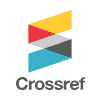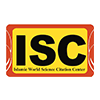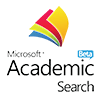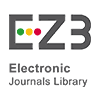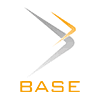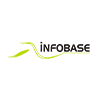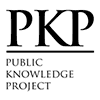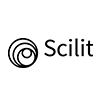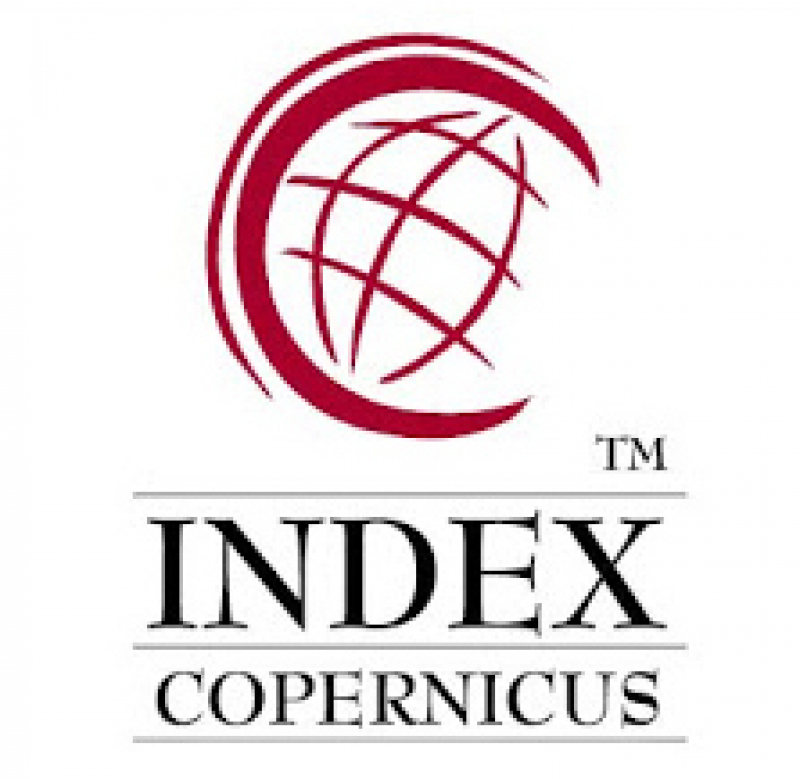Transforming Medical Education: The Impact of Flipped Classrooms on the Reading Comprehension of Iranian ESP Students
Abstract
Traditional teacher-centred methods in medical education often lead to passive learning, hindering students' engagement with complex clinical scenarios. This study examines the flipped classroom model's effect on reading comprehension among Iranian medical students, comparing it to traditional lecture-based methods and assessing its impact across different proficiency levels. A mixed-methods sequential explanatory design was employed, involving 100 first-year medical students divided into flipped classroom and traditional lecture groups. Quantitative data were collected using the TOEFL ITP Reading Comprehension test, administered before and after the intervention, and analyzed through independent samples t-tests and Mann-Whitney U tests. Qualitative data were gathered via semi-structured interviews with 15 participants and analyzed using grounded theory. Results indicated that the flipped classroom group achieved significantly higher post-intervention scores compared to the traditional group, with intermediate-proficiency learners benefiting most. However, low-proficiency students showed no significant improvement, suggesting that the intervention's benefits are influenced by baseline skill levels. Qualitative themes highlighted enhanced engagement, collaborative learning, and challenges with self-regulation and cognitive load, particularly among low-proficiency students. These findings underscore the flipped classroom's potential to improve reading comprehension in medical education, especially for intermediate learners, while emphasizing the need for tailored support to address self-regulation and cognitive load challenges for low-proficiency students. The study advocates for adopting flipped instruction in medical education, complemented by strategies such as tiered resources and metacognitive training, to optimize learning outcomes and better prepare future healthcare professionals.
Keywords
Full Text:
PDFReferences
Abeysekera, L., & Dawson, P. (2015). Motivation and cognitive load in the flipped classroom: definition, rationale and a call for research. Higher education research & development, 34(1), 1-14.
Akçayır, G., & Akçayır, M. (2018). The flipped classroom: A review of its advantages and challenges. Computers & education, 126, 334-345.
Alsowat, H. (2016). An EFL flipped classroom teaching model: Effects on English language higher-order thinking skills, student engagement and satisfaction. Journal of education and practice, 7(9), 108-121.
Awidi, I. T., & Paynter, M. (2019). The impact of a flipped classroom approach on student learning experience. Computers & education, 128, 269-283.
Bredow, P. R. a. C. (2021
). Flipped learning: What is it, and when is it effective? Retrieved from https://www.brookings.edu/articles/flipped-learning-what-is-it-and-when-is-it-effective/
Brown, A. F. (2018). Implementing the flipped classroom: Challenges and strategies. Innovations in Flipping the Language Classroom: Theories and Practices, 11-21.
Chen, F., Lui, A. M., & Martinelli, S. M. (2017). A systematic review of the effectiveness of flipped classrooms in medical education. Medical education, 51(6), 585-597.
Cheng, L., Ritzhaupt, A. D., & Antonenko, P. (2019). Effects of the flipped classroom instructional strategy on students’ learning outcomes: A meta-analysis. Educational Technology Research and Development, 67, 793-824.
Connolly, M. ( 2024). Lesson Planning for Flipped Classroom Instruction: 10 Effective Strategies for Engaging Students. Retrieved from https://learningmole.com/lesson-planning-flipped-classroom-instruction/
Dikilitas, K., & Fructuoso, I. (2023). Conceptual framework for flexible learning design: The Context of flipped classroom. Conceptual framework for flexible learning design: The Context of flipped classroom. https://doi. org/10.31265/usps, 267.
Fahmi, A., Mukminatien, N., Ginting, D., & Kusumaningrum, S. R. (2024). The impact of flipping class intervention on reading comprehension: Different approaches and proficiency levels. PLOS ONE, 19(6), e0305041.
Fatemeh, K., Mahmoud, A., & Roman, K. (2020). USING INTERACTIVE E-BASED FLIPPED LEARNING TO ENHANCE EFL LITERATURE STUDENTS'CRITICAL READING. Science for education today, 10(1), 25-42.
Fosnot, C. T. (2013). Constructivism: Theory, perspectives, and practice: Teachers College Press.
Gardner, J. (2017). Flipping the classroom: Challenges of implementation Blended learning: Concepts, methodologies, tools, and applications (pp. 1863-1881): IGI Global.
Hasanah, I., & Arifani, Y. (2020). The effect of flipped classroom toward ESP students reading comprehension. Paper presented at the Proceedings of the Borneo International Conference on Education and Social Sciences (BICESS 2018).
Hashemifardnia, A., Namaziandost, E., & Shafiee, S. (2018). The effect of implementing flipped classrooms on Iranian junior high school students' reading comprehension. Theory and Practice in Language Studies, 8(6), 665-673.
Karimi, M., & Hamzavi, R. (2017). The effect of flipped model of instruction on EFL learners’ reading comprehension: Learners’ attitudes in focus. Advances in Language and Literary Studies, 8(1), 95-103.
Karimian, Z., Mokarram, P., & Zarifsanaiey, N. (2024). Comparison of the teaching clinical biochemistry in face-to-face and the flex-flipped classroom to medical and dental students: a quasi-experimental study from IRAN. BMC Medical Education, 24(1), 137.
Khodabandeh, F., & Tharirian, M. H. (2020). Exploring the Impact of Blended, Flipped, and Traditional Teaching Strategies for Teaching Grammar on Iranian EFL Learners''''through English Newspaper Articles. Teaching English as a Second Language Quarterly (Formerly Journal of Teaching Language Skills), 39(3.1), 89-129.
Khojasteh, L., Hosseini, S. A., & Nasiri, E. (2021). The impact of mediated learning on the academic writing performance of medical students in flipped and traditional classrooms: Scaffolding techniques. Research and Practice in Technology Enhanced Learning, 16(1), 17.
Khoshnoodi Far, M., Mohajerpour, R., Rahimi, E., Roshani, D., & Zarezadeh, Y. (2019). Comparison between the effects of flipped class and traditional methods of instruction on satisfaction, active participation, and learning level in a continuous medical education course for general practitioners. Scientific Journal of Kurdistan University of Medical Sciences, 24(1), 56-65.
Li, R., Lund, A., & Nordsteien, A. (2023). The link between flipped and active learning: a scoping review. Teaching in Higher Education, 28(8), 1993-2027.
Lo, C. K., & Hew, K. F. (2017). A critical review of flipped classroom challenges in K-12 education: Possible solutions and recommendations for future research. Research and Practice in Technology Enhanced Learning, 12, 1-22.
Mohammadinia, L., Amini, M., Marzieh, A., & Faeze, B. (2022). Evaluation of Flipped Classroom Teaching Methods in Improving the Knowledge and Readiness of Medical Students in Disasters. Depiction of Health, 13(4), 398-408.
Nourinezhad, S., Hadipourfard, E., & Bavali, M. (2022). The effect of flipped learning on English writing performance and self-efficacy of Iranian medical students. Journal of Language Horizons, 6(1), 161-182.
Peterson, D. J. (2016). The flipped classroom improves student achievement and course satisfaction in a statistics course: A quasi-experimental study. Teaching of psychology, 43(1), 10-15.
Sagheb, M. M., Amini, M., Saber, M., Moghadami, M., Nabiei, P., Khalili, R., . . . Hayat, A. A. (2018). Teaching evidence-based medicine (EBM) to undergraduate medical students through flipped classroom approach. Shiraz E-Medical Journal, 19(2).
Seidi, M., Ramezani-Aliakbari, F., & Doosti-Irani, A. (2024). Effectiveness of the flipped classroom method using clinical scenarios and Educational Technology versus Subject-Based Lectures in a gastrointestinal physiology course for medical students. BMC Medical Education, 24(1), 858.
Shahzamani, M., & Tahririan, M. H. (2021). Iranian medical ESP practitioners' reading comprehension assessment literacy: Perceptions and practices. Iranian Journal of English for Academic Purposes, 10(1), 1-15.
Shi, X.-Y., Yin, Q., Wang, Q.-W., Lu, B.-R., Li, G.-X., Huang, S.-H., & Sun, Z.-G. (2025). Is the flipped classroom more effective than the traditional classroom in clinical medical education: a systematic review and meta-analysis. Paper presented at the Frontiers in Education.
Sin, S. L., & Siahpoosh, H. (2020). Looking at the impact of the flipped classroom model on reading comprehension of Iranian EFL learners. Arabic Language, Literature & Culture, 5(2), 14.
Tague, J., & Baker, G. R. (2014). Flipping the classroom to address cognitive obstacles. Paper presented at the 2014 ASEE Annual Conference & Exposition.
Xin, X., & Zhang, M. (2024). Effects of flipped English learning designs on learning outcomes and cognitive load: Workload of out‐of‐class activities versus during‐class activities. Journal of Computer Assisted Learning.
DOI: http://dx.doi.org/10.18415/ijmmu.v12i1.6648
Refbacks
- There are currently no refbacks.
Copyright (c) 2025 International Journal of Multicultural and Multireligious Understanding

This work is licensed under a Creative Commons Attribution-NonCommercial-NoDerivatives 4.0 International License.
https://ijmmu.com
editor@ijmmu.com
facebook.com/ijmmu
Copyright © 2014-2018 IJMMU. All rights reserved.






